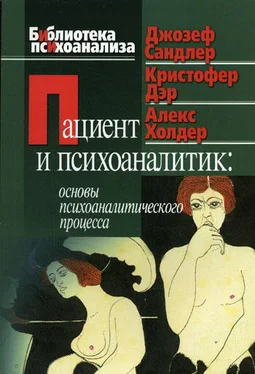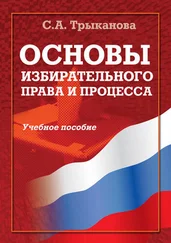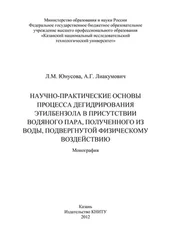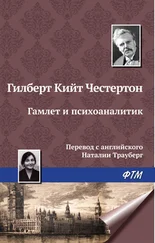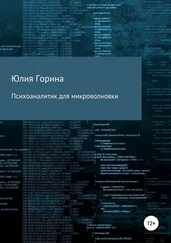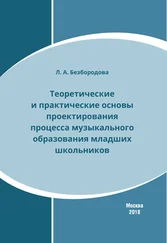GRINBERG, L. (1987). Dreams and acting out // Psychoanalytic Quarterly, 56, 155–176.
GRUNERT, U. (1979). Die negative therapeutische Reaktion als Ausdruck einer Stoerung im Losloesungs – und Individuationsprozess // Psyche, 33, 1—29.
GUNDERSON, J.G. (1977). Characteristics of bordelines // P. Hartocollis (Ed.), Borderline Personality Disorders: The Concept, the Symptom, the Patient. – N.Y.: International Universities Press.
GUNDERSON, J.G. (1984). Borderline Personality Disorder. – Washington, DC: American Psychatric Press.
GUTHEIL, Т.G., HAVENS, L.L. (1979). The therapeutic alliance: contemporary meanings and confusions // International Review of Psychoanalysis, 6: 467–481.
HALPERT, E. (reporter) (1984). Panel: The value of extratransference interpretation // Journal of the American Psychoanalytic Association, 32, 137–146.
HAMMETT, V.B.O. (1961). Delusional transference // American Journal of Psychotherapy, 15: 574–581.
HANLY, C. (1981). Narcissism, defence and the positive transference // International Journal of Psycho-Analysis, 63: 427–444.
HARLEY, M. (1971). The current status of transference neurosis in children // Journal of the American Psychoanalytic Association, 19, 26–40.
HARTMANN, H. (1939). Ego Psychology and the Problem of Adaptation. – Lndn.: Imago, 1958.
HARTMANN, H. (1944). Psychoanalysis and sociology // Essays on Ego and Psychology. – Lndn.: Hogarth Press, 1964.
HARTMANN, H. (1951). Technical implications of ego psychology // Psychoanalytic Quarterly, 20, 31–43.
HARTMANN, H. (1956). The development of the ego concept in Freud’s work // International Journal of Psycho-Analysis, 37: 425–438.
HARTMANN, H. (1964). Essays on Ego Psychology. – Lndn.: Hogarth Press.
HATCHER, R.L. (1973). Insight and self-observation // Journal of the American Psychoanalytic Association, 21, 377–398.
HEIMANN, P. (1950). On counter-transference // International Journal of Psycho-Analysis, 31: 81–84.
HEIMANN, P. (1960). Counter-transference // British Journal of Medical Psychology, 33: 9—15.
HILL, D. (1968). Depression: disease, reaction or posture? // American Journal of Psychiatry, 125: 445–457.
HINSHELWOOD, R.D. (1989). A Dictionary of Kleinian Thought. – Lndn: Free Association Books.
HINSIE, L.E., CAMPBELL, R.J. (1970). Psychiatric Dictionary (4th edition). – Lndn: Oxford University Press.
HOFFER, W. (1956). Transference and transference neurosis // International Journal of Psycho-Analysis, 37: 377–379.
HOLDER, A. (1970). Conceptual problems of acting out in children // Journal of Child Psychotherapy, 2: 5—22.
HOKNEY, К. (1936). The problem of the negative therapeutic reaction / / Psychoanalytic Quarterly, 5, 29–44.
HOROWITZ, M.H. (1987). Some notes on insight and its failures // Psychoanalytic Quarterly, 56, 177–198.
INFANTE, J.A. (1976). Acting out: a clinical reappraisal // Bulletin of the Menninger Clinic, 40: 315–324.
ISAAKS, S. (1939). Criteria for interpretation // International Journal of Psycho-Analysis, 20: 148–160.
IVIMEY, M. (1948). Negative therapeutic reaction // American Journal of Psychoanalysis, 8: 24–33.
JACOBS, T.J. (1973). Posture, gesture, and movement in the analysis: cues to interpretation and countertransference // Journal of the American Psychoanalytic Association, 21, 77–92.
JACOBS, T.J. (1983). The analyst and the patient’s object world: notes on an aspect of countertransference // Journal of the American Psychoanalytic Association, 31, 619–642.
JACOBS, T.J. (1986). On countertransference enactments // Journal of the American Psychoanalytic Association, 34, 289–307.
JACOBS, T.J. (1987). Notes on the unknowable: analytic secrets and the transference neurosis // Psychoanalytic Inquiry, 7, 485–509.
JASPERS, K. (1913). Allgemeine Psychopathologie. – Berlin: Springer Verlag.
JOFFE, W.G., SANDLER, J. (1965). Notes on pain, depression and individuation // Psychoanalytic Study of the Child, 20: 394–424.
JOFFE, W.G., SANDLER, J. (1967). On the concept of pain, with special reference to depression and psychogenic pain // Journal of Psychosomatic Research, 11: 69–75.
JONES, E. (1955). Sigmund Freud: Life and Work, Vol. 2. – N.Y.: Basic Books.
JOSEPH, B. (1985). Transference: the total situation // International Journal of Psycho-Analysis, 66: 447–454.
JOSEPH, B. (1987). Projective identification: clinical aspects // J. Sandier (Ed.), Projection, Identification, Projective Identification. – Madison CT: International Universities Press.
JUNG, C.G. (1907). Ueber die Psychologic der Dementia Praecox: Ein Versuch, Halle A.S. // Collected Works, Vol. 3. – Lndn: Routledge & Kegan Paul, 1960.
KANZER, M. (1981). Freud's «analytic pact»: the standard therapeutic alliance // Journal of the American Psychoanalytic Association, 29, 69–87.
KAPLAN, A. (1964). The Conduct of Inquiry. – San Francisco: Chandler Publishing Co.
KEMPER, W.W. (1966). Transference and countertransference as a functional unit: Official Report on Pan-American Congress for Psycho-Analysis.
KENNEDY, H. (1979). The role of insight in child analysis: a developmental viewpoint // Journal of the American Psychoanalytic Association, 27 (supplement), 9—28.
KEPECS, J.G. (1966). Theories of transference neurosis // Psychoanalytic Quarterly, 35, 497–521.
KERNBERG, O.F. (1965). Notes on countertransference // Journal of the American Psychoanalytic Association, 13, 38–56.
KERNBERG, O.F. (1967). Borderline personality organisation // Journal of the American Psychoanalytic Association, 15, 641–685.
KERNBERG, O.F. (1975). Borderline Conditions and Pathological Narcissism. – N.Y.: Jason Aronson.
KERNBERG, O.F. (1976a). Object Relations Theory and Clinical Psychoanalysis. – N.Y.: Jason Aronson.
KERNBERG, O.F. (1976b). Technical considerations in the treatment of borderline personality organisation // Journal of the American Psychoanalytic Association, 24, 795–829.
KERNBERG, O.F. (1980a). Character structure and analyzability // Bulletin of the Association of Psychoanalytic Medicine, 19: 87–96.
KERNBERG, O.F. (1980b). Internal World and External Reality. – N.Y.: Jason Aronson.
KERNBERG, O.F. (1985). Object relations theory and character analysis // H.P. Blum (Ed.), Defense and Resistance. – N.Y.: International Universities Press.
KERNBERG, O.F. (1987). An ego psychology-object relations theory approach to the transference // Psychoanalytic Quarterly, 56, 197–221.
KERNBERG, O.F. (1988). Object relations theory in clinical practice // Psychoanalytic Quarterly, 57, 481–504.
KERZ-RUEHLING, I. (1986). Freuds Theorie der Einsicht // Psyche, 40: 97—123.
KHAN, M.M.R. (1960). Regression and integration in the analytic setting // International Journal of Psycho-Analysis, 41: 130–146.
KHAN, M.M.R. (1963). Silence as communication // Bulletin of the Menninger Clinic, 27: 300–317.
KHAN, M.M.R. (1972). Dread of surrender to resourceless dependence in the analytic situation // International Journal of Psycho-Analysis, 53: 225–230.
KING, P. (1974). Notes on the psychoanalysis of older patients. Reappraisal of the potentialities for change during the second half of life // Journal of Analytical Psychology, 19: 22–37.
KLAUBER, J. (1972). On the relationship of transference and interpretation in psychoanalytic therapy // International Journal of Psycho-Analysis, 53: 385–391.
KLAUBER, J. (1980). Formulating interpretation in clinical psychoanalysis // International Journal of Psycho-Analysis, 61: 195–202.
KIAUBER, J. (1981). Difficulties in the Analytic Encounter. – N.Y.: Jason Aronson. [Reprinted Lndn: Karnac Books, 1986.]
KLEIN, M. (1932). The Psycho-Analysis of Children. – Lndn.: Hogarth Press.
Читать дальше
Конец ознакомительного отрывка
Купить книгу
